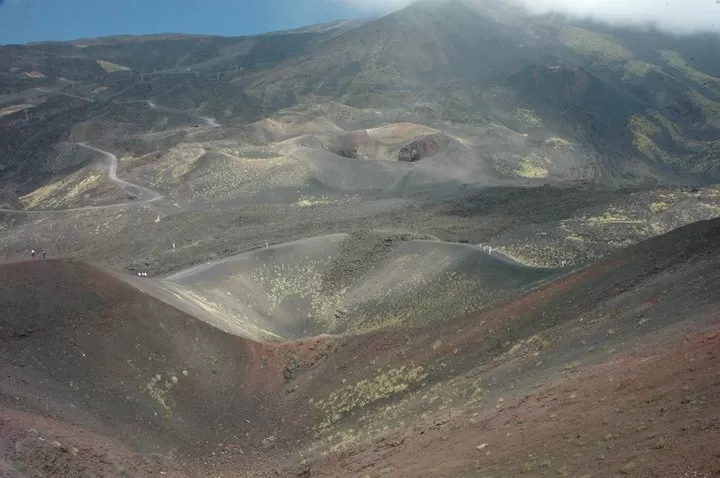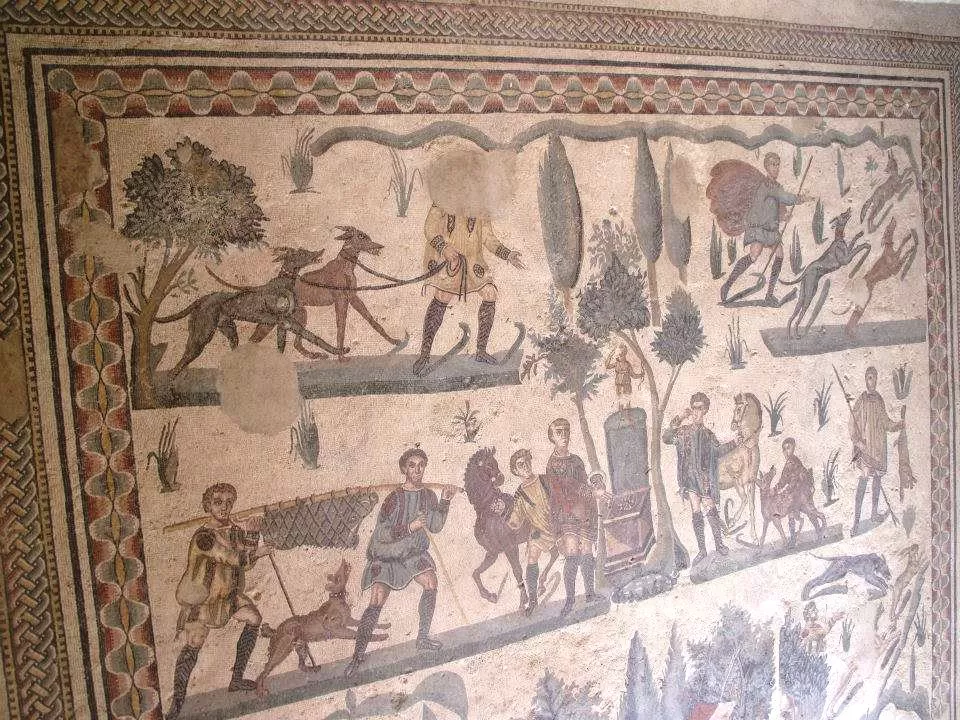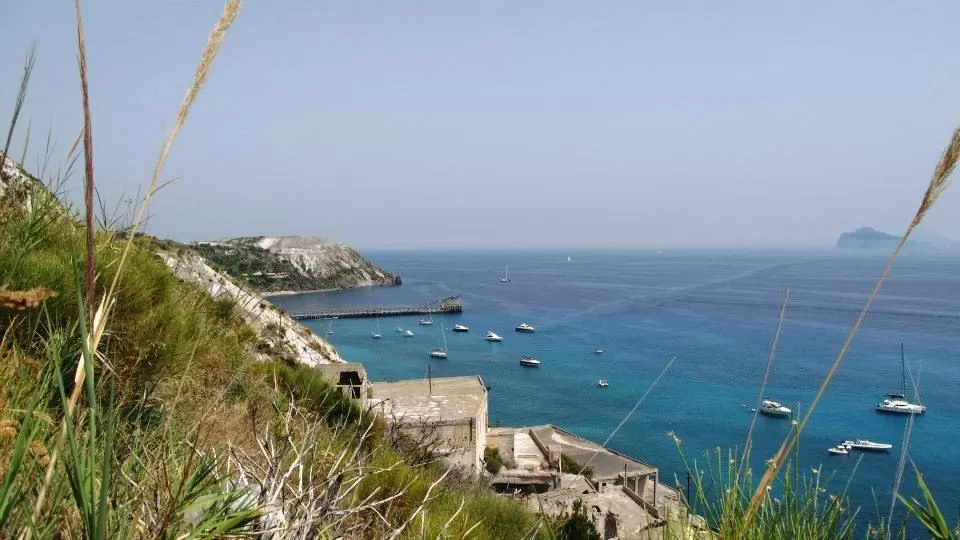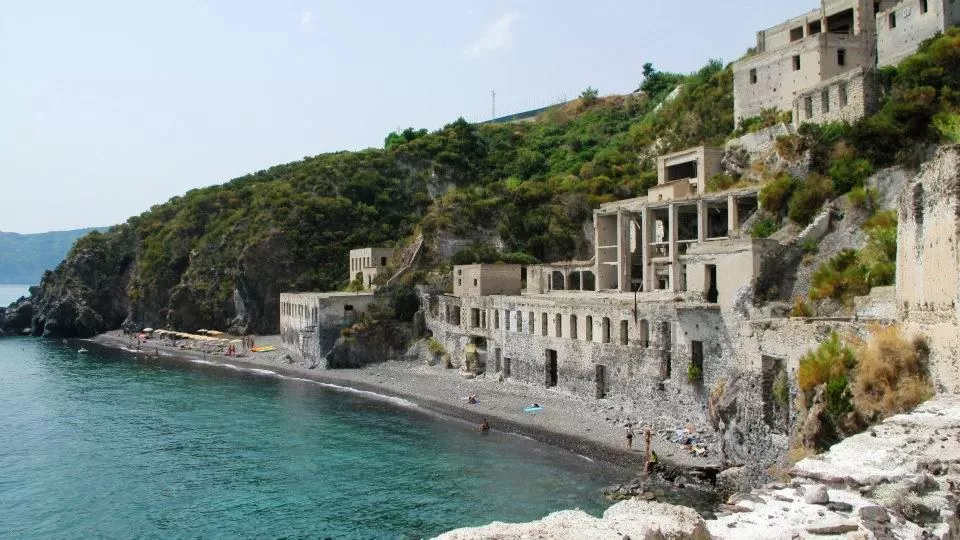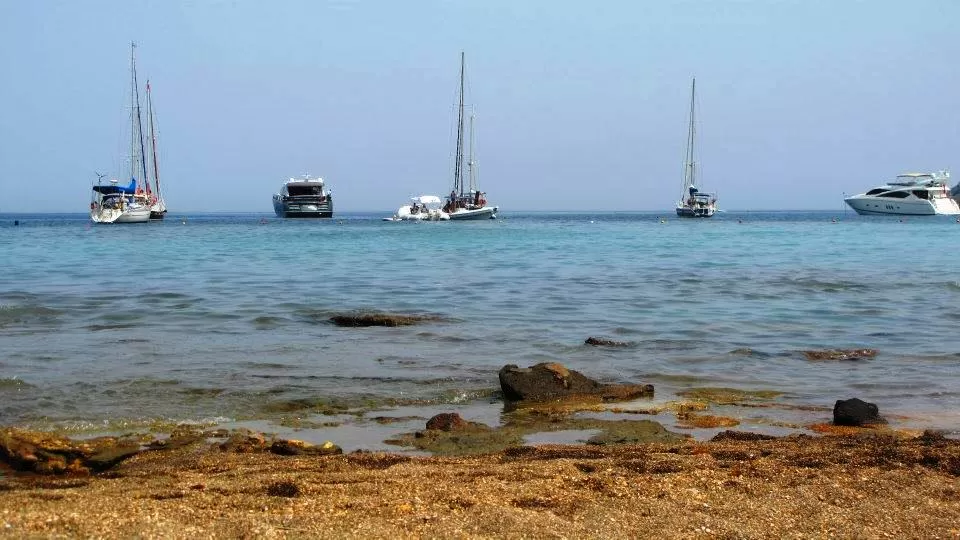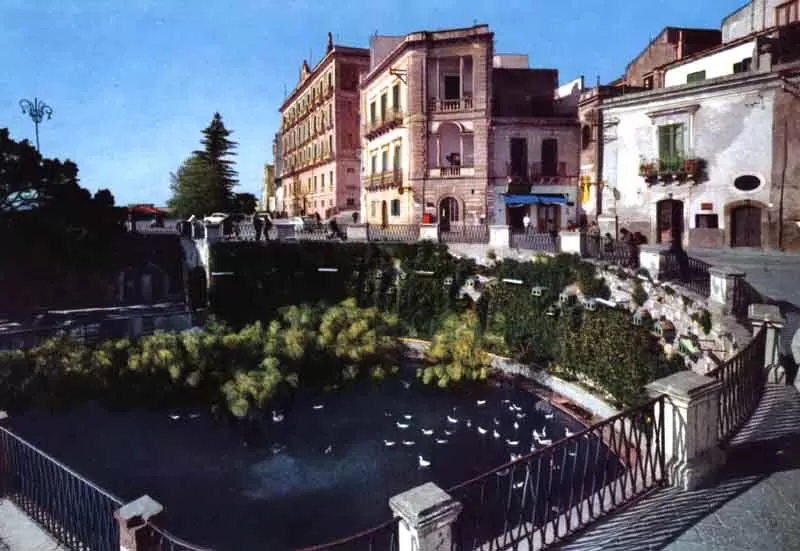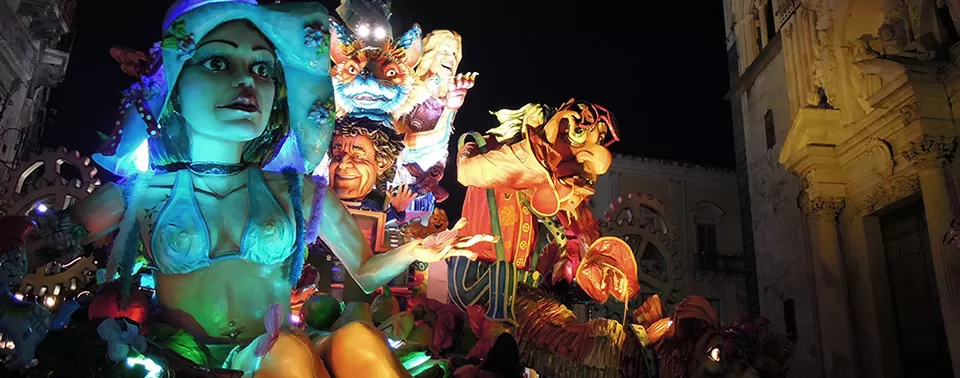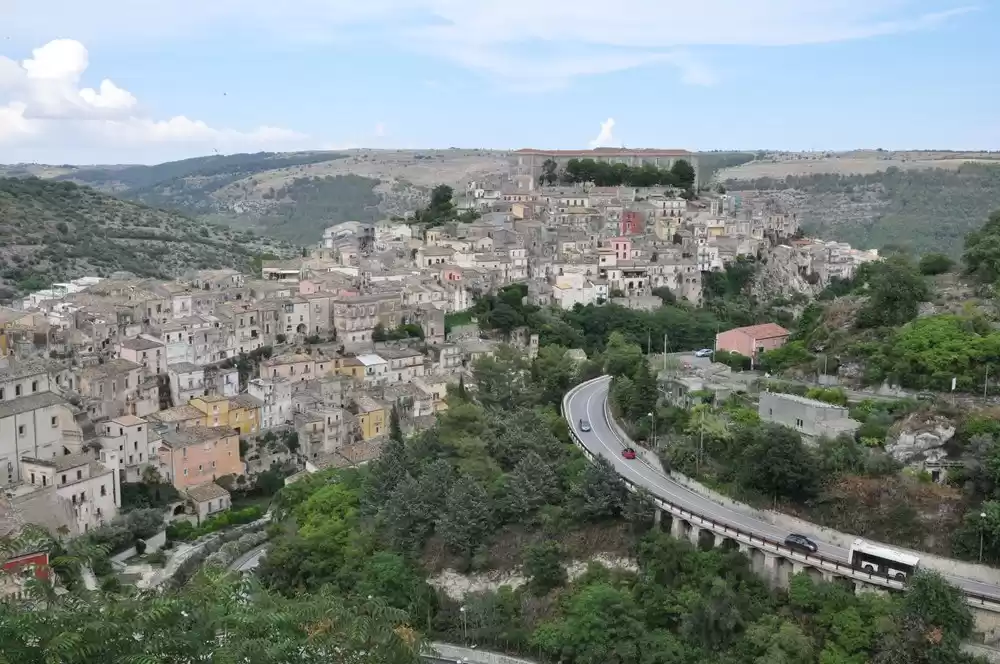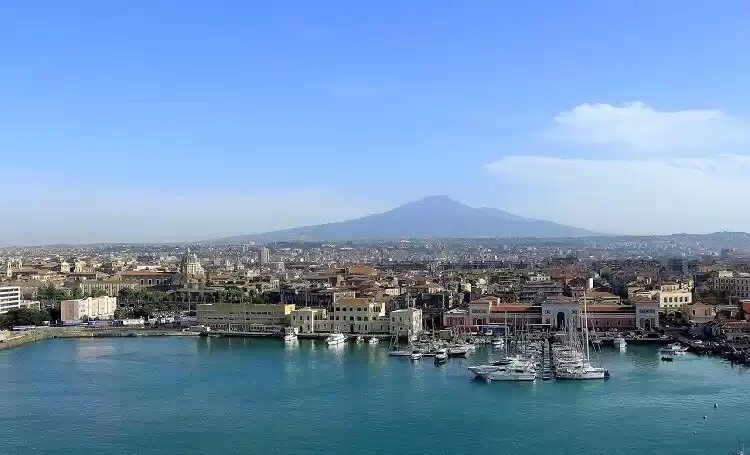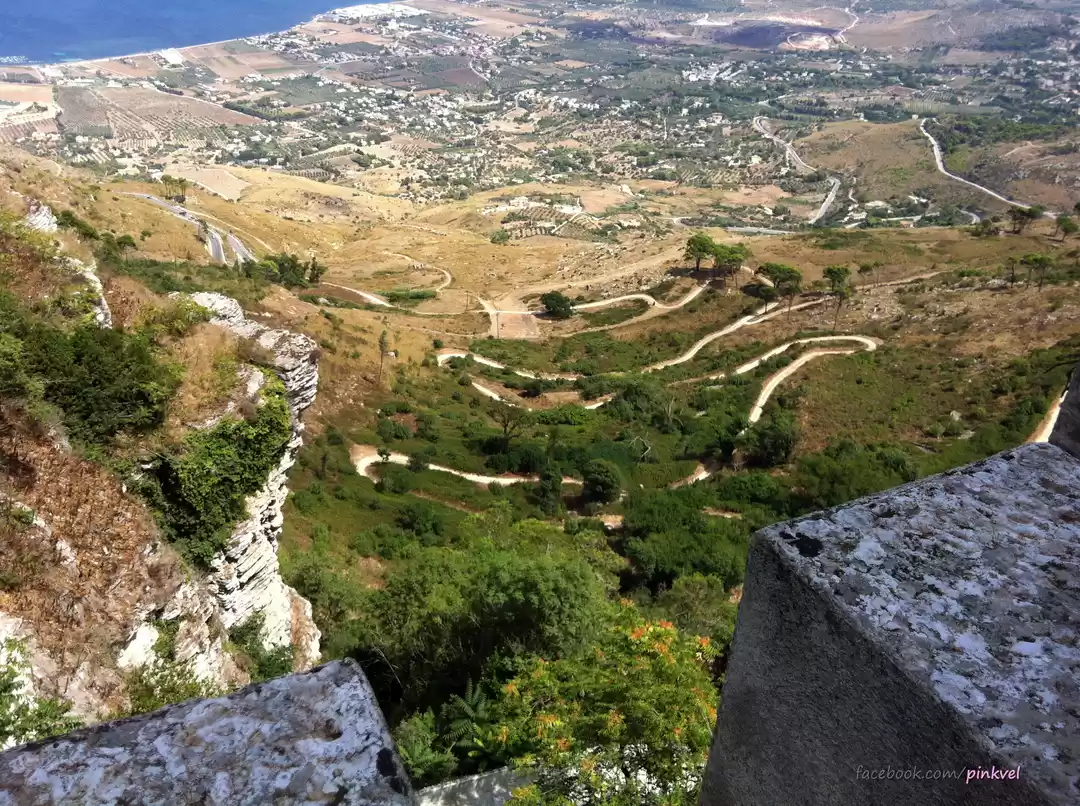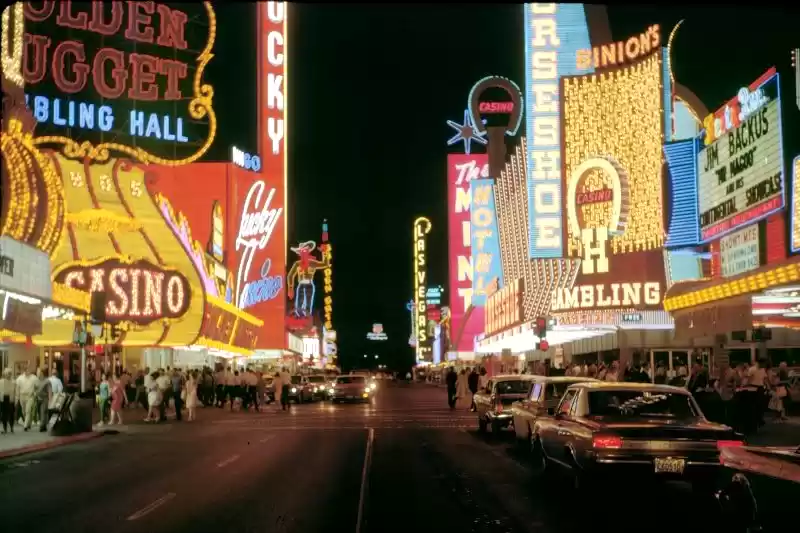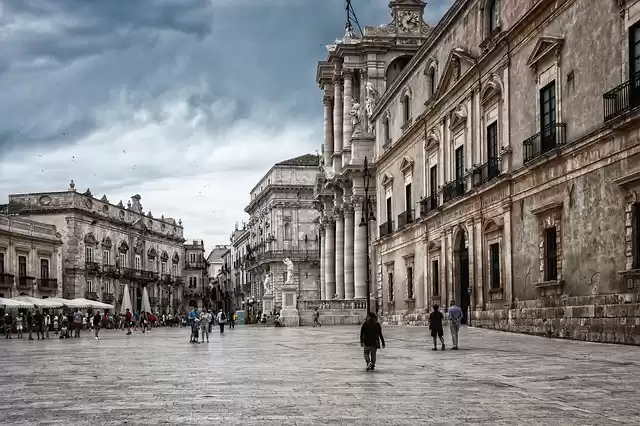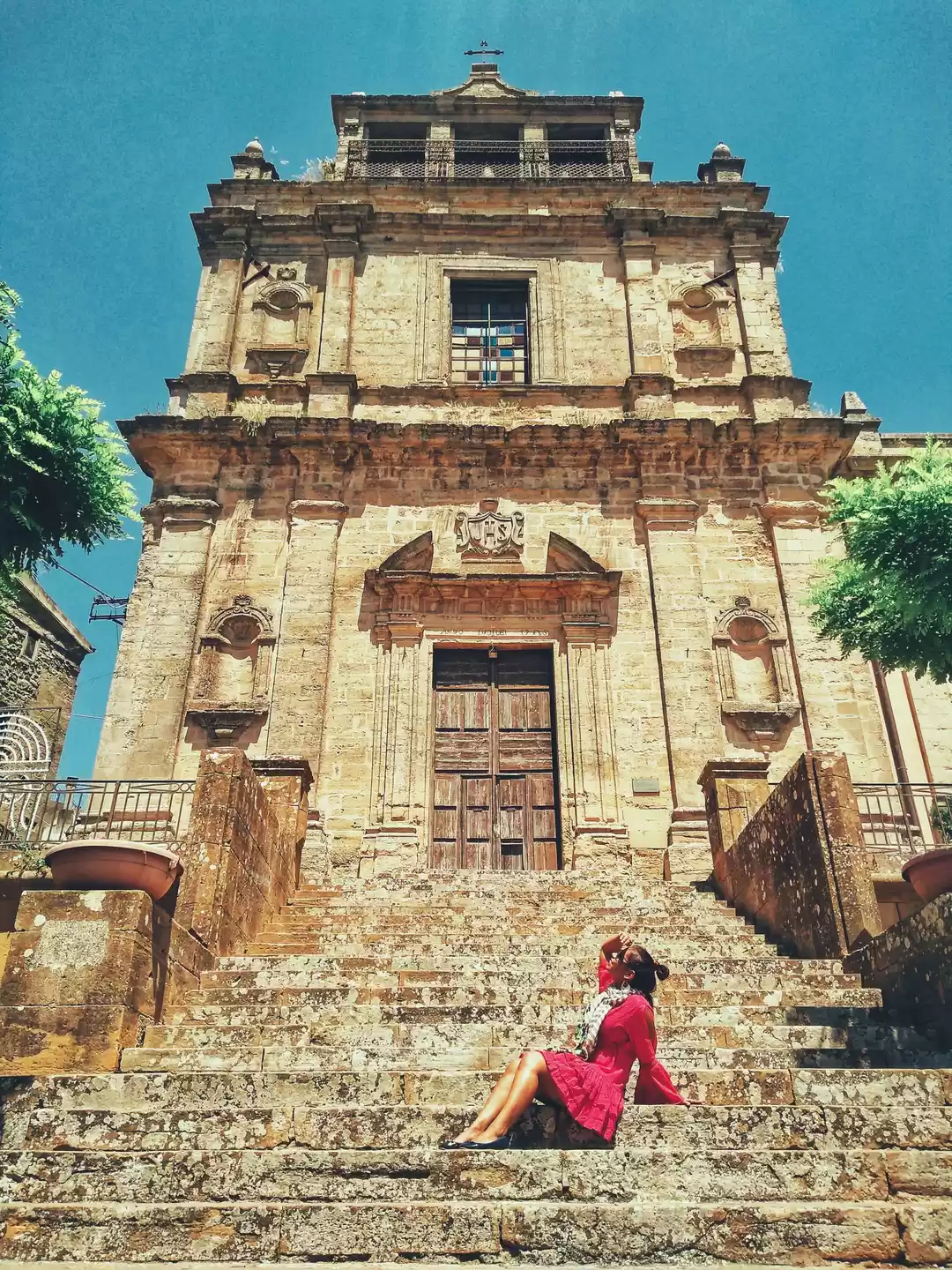




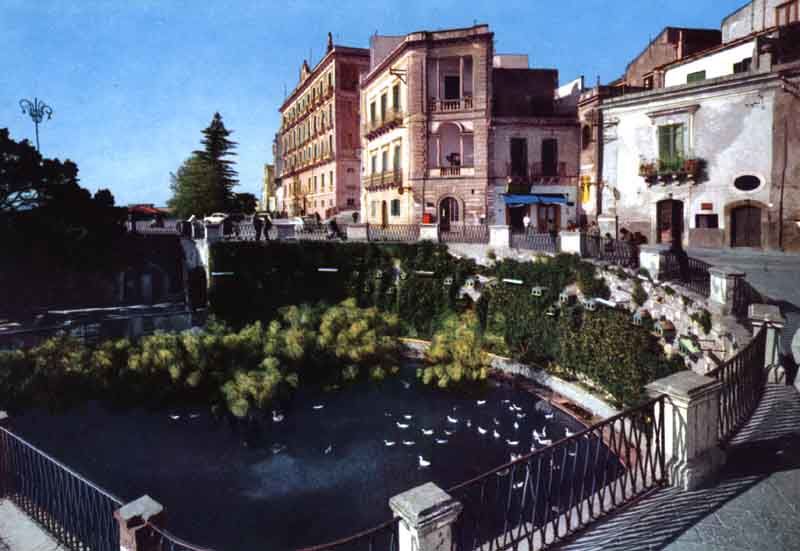



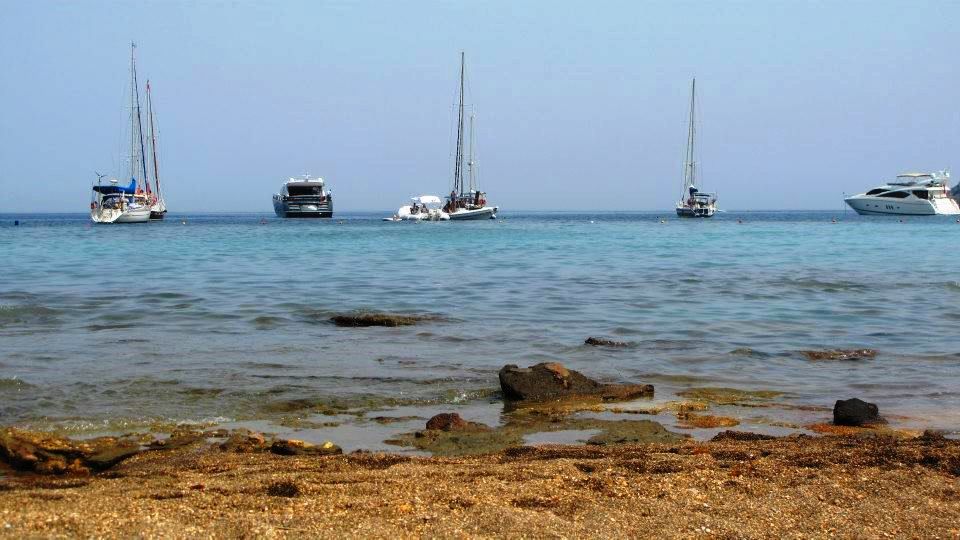

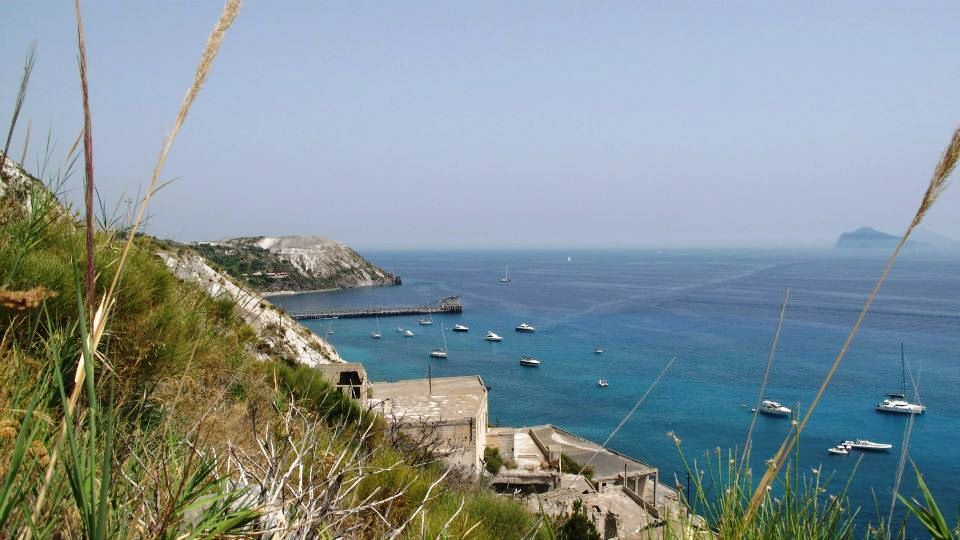

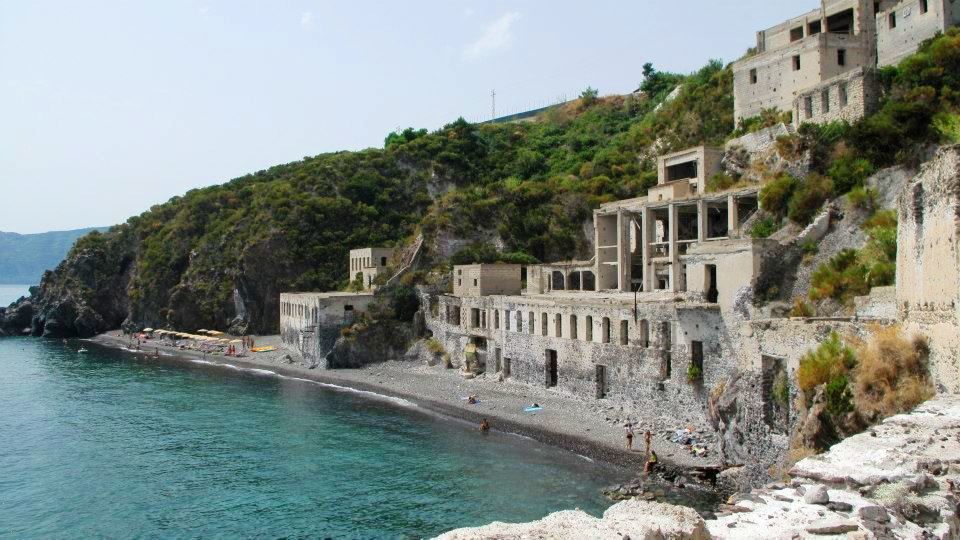
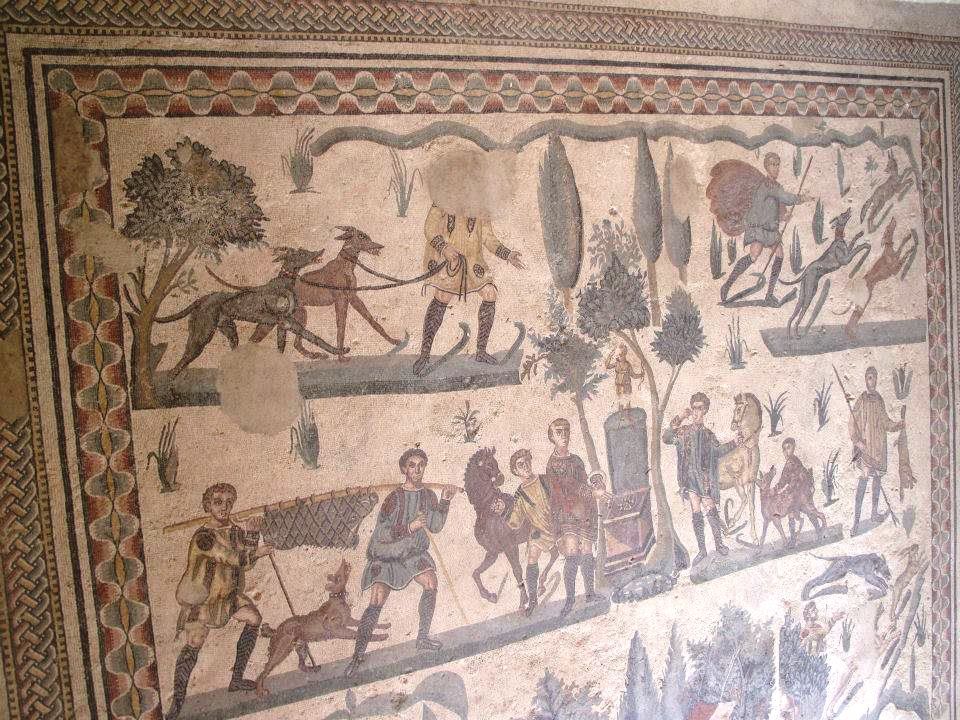



Yes you’ve guessed it! I have just returned from another annual summer holiday to Sicily. A relaxing holiday it wasn’t, (lost our luggage!) however it was great to show off our favorite place to two of our closest friends who had never been to Sicily before. If your thinking of visiting Sicily and have never been before here are the top 10 must see places in Sicily that should be on your hit list!
1. TAORMINA
Idyllically perched on a rocky promontory high above the sea, Taormina has been the most popular tourist destination in Sicily for a couple of hundred of years and is one of my favorite places to head to in the early evening when the sun is setting and you get this amazing view…
Beautifully restored medieval buildings, breathtaking views around every corner and a giddy network of winding streets strewn with shops, bars and restaurants makes it a great place for a stroll around, with an authentic Italian atmosphere. At the very back of the town lies a Teatro Greco. As the name suggests its a Greek theater estimated to of been built around the 3rd Century. The views from the theater are spectacular, taking in a (usually) smoking Mount Etna and the Bay of Naxos down below. As an additional extra 18km north of Taormina likes Forza D’Agro the filming location of the Godfather. Worth a visit if your in the area!
2. Mount Etna
The most active volcano in Europe and by far the biggest dominating attraction in Eastern Sicily, Mount Etna is a must visit. If you head to Etna Sud you have the option to walk around some of the older craters on foot or take a cable car ride to 2,900m, from there it is a 2-4 hour round trip to the summit craters, although there is no need to go that far to get a good feel for the majesty of the mountain. The other point of departure is Etna Nord (Piano Provenzana) from where you may walk or take 4X4 buses up to the observatory at 2,400m. You may walk to the summit craters from there. I would highly advise to not go venturing to the main craters of Etna without a qualified guide.
3. Agrigento – Valle-Dei-Templi
Probably Sicily’s most famous and historical sites lies in Agrigento – Valley of the Temples. This UNESCO archaeological park consists of eight temples (and various other remains) built between about 510 BC and 430 BC: the Temple of Hera, the Temple of Concordia, the Temple of Heracles, the Temple of Olympian Zeus, the Temple of Castor and Pollux, the Temple of Hephaestos, the Temple of Demeter, and the Temple of Asclepius (the God of Medicine).
4. Piazza Armerina and Villa Romana del Casale
Another of Sicily’s most famous tourist attractions lies in Piazza Armerina. Some of the worlds best preserved mosaics can be seen at the famous Villa Romana del Casale. Built in the middle of the 4th Century AD as a hunting lodge by a Roman patrician, here you can see some of the most extensive Roman mosaics. The villa is one of the most luxurious of its kind. It is especially noteworthy for the richness and quality of the mosaics which decorate almost every room; they are the finest mosaics still intact in the Roman world. The site is also a UNESCO World Heritage Site. Entry is around 10 Euro per person and you can see all the estate in under half a day.
5. The Aeolian Islands
Most people on their first visit to Sicily tend to stick on the mainland as there is already so much to see! However if you have some time or are visiting Sicily for a second time I highly recommend a day trip to some of the Aeolian Islands. Most day trips leave from Milazzo. We took a day trip to the islands of Vulcano, Lipari and Salina. These small islands are somewhat unspoiled and are very much steeped in history, myths and legends and some have great beaches. Most day trips will drop you off at one of the ports on the islands. Getting around is fairly simple, you can walk around the ports and small towns easily however we hired a moped so we could see as much as we could in the short 3 or 4 hours you have on each island. It allowed us to get to some remote beaches and drive through some of the small picturesque towns. Below are pictures we took in Lipari.
Vulcano is famous for its mud baths (‘fanghi’) and its still smoking main crater. Depending on the wind, you might be immediately hit by the characteristic sulfurous smell coming from the hot springs. (Smells of rotten eggs! Yuk!) A swim in the shallow shores on the beach is also good fun, with thermal hot water seeping through the rocks bubbling to the surface. Its almost like a natural jacuzzi. Although I would advise to bring water shoes here as the rocks can be quite slippery and sharp. There’s a shower on the beach if you want to have a rinse and the sulfur smell sticks to your skin! Its 1 Euro for about 60 seconds. There also isn’t a great deal of choice in restaurants. We bought a small packed lunch with us anyway and 2 bottles of water with us in a backpack!
There are quite a few other islands, another famous one is Stromboli. This volcanic island is constantly erupting and you can take a tour here to see it’s flowing lava. Even better at night so I am told!
6. Syracuse (or Siracusa)
Siracusa is one of those places in Sicily that you have to visit. Without visiting would be like missing an essential part of the island. This city has an incredible amount of archaeological sites and some great architectural buildings. It is by far my favorite city in Sicily. The archaeological site, situated in the northwest of the town, is home to a staggering number of well-preserved Greek (and Roman) remains. The main attraction is undoubtedly the Greek theatre that dates back at least until the 5th Century BC. There is also remains of a Roman theatre and the famous “Ear of Dionysius”, a 20m-high, slender pointed arch cut into the rock face that develops inwards for about 65m.
There are also the famous Catacombs of San Giovanni. Although not a massive highlight they are worth seeing if you have time. Running for kilometers under the city these catacombs were excavated for the most part between 315 and 360 A.D., and remained in use until the end of the 5th century. Unfortunately, after thousands of years of looting, what survives is only the “bare bones” of the building, stripped of colored plaster, mosaics, stone slabs, and even small objects that were incorporated into the enclosures to distinguish one tomb from another.
Ortigia – Siracuse’s island heart
The best way to see the island of Ortigia is just to wander. It’s difficult to get lost (it measures just 1km by 500 meters and has lots of little streets that all look the same), but packed with over 2,500 years of history. We often come here at night as its a great place to soak up some Italian nightlife, wander past the harbor showcasing the yachts and sailing boats of the elite and also drop by the famous fountain of youth (La Fonte Aretusa).
Half a dozen Greek poets wrote the tale of the nymph Arethusa, who was bathing in the Alpheus River in Greece one day when the god of that river took a liking to her. She begged for deliverance from his advances, and Artemis in pity turned the nymph into a spring, allowing her to escape underground. She traveled under the sea to emerge here, in Siracusa. Alpheus, though, was hot on her heels, and came gushing out in the same spot, mingling his waters with hers for eternity. Apparently this, to the Greeks, was romantic. They used to say you could toss a goblet into a spring at Arcadia in Greece and it would pop up here.
7. Cava Grande – Avola
This is one of Sicily’s best kept secrets! This fantastic natural reserve is a great alternative to a day at a beach – if you can find it! This canyon is a system of fresh water ponds and waterfalls 507 meters down from the viewpoint and point of arrival at the top of the gorge. Beware you must be physically fit to visit here as its a long walk down a uneven dirt path and an even harder trek back up! (You’ll see what I mean when you look at the picture below!) There are no services once you get to the bottom so make sure you take plenty of water and food with you if you plan on spending the day there. There is parking available at the site and it is advised to bring water shoes as some of the rocks are rough on the feet. Oh and the water is freezing!
If the trek looks like it will be too much for you there is a similar place to visit called Gole di Alcantara. This river gorge has better access (by which I mean a set of steps down and no way near as deep!) and also offers river treks and walks! This gorge was originally formed by ancient lava flows from Mount Etna and consists of immense natural canyons 50 meters deep. Again there are no facilities at the bottom so take your supplies and water shoes with you. I’d also advise if you take children to stay with them at all times as part of the river runs extremely quickly and can knock you off your feet! I know because it happened to me!
8. Palermo
Palermo, the regional capital of Sicily, is one of those cities with its own very distinct, almost tangible atmosphere, a place of mystery where reality often outperforms the traveller’s imagination and preconceived stereotypes. Visiting Palermo is still somewhat of an adventure in a world where so many places have become tourist-friendly to a fault. You won’t find many restaurants with menus translated into 5 different languages, you may have trouble communicating in English in many places, and some parts of the old town center have remained untouched since they were bombed during the war.
9. Catania
Sicily’s second largest city is Catania, and is where a majority of European flights land in to. It lies on the Eastern side of the island along the Ionian coast, sitting in the shadows beneath Mount Etna. In 1669 Catania was covered in lava from Mount Etna and then, just 24 years later in 1693 an earthquake shook the town down to its foundations. Most of the old town was rebuilt, and as ever resourceful was rebuilt using lava, therefore Catania is describe as being a rather dull and grey city. There are a couple of nice piazzas and the Duomo is worth a visit. The atmosphere is what really brings you to the city, the bustling fish markets, the people and the smells. There is a place in the city that is also renowned for horse meat if that’s your thing! Or if not give it a try..although the signature dish of Catania is Pasta alla Norma, that consists of fried chunks of aubergine, a rich tomato sauce and salty ricotta cheese….. Buon appetito!
10. Acireale
I debated whether to include this in the top ten or not. Just 5km north of Catania and a short drive from Taormina the town of Acireale doesn’t really offer anything unique in terms of architecture or atmosphere than any other small Sicilian towns nearby. However this small town has become famous for its carnival. It is one of Sicily’s most spectacular cultural events and one of the largest & most frequented carnivals in Italy. With its dizzying array of floats, dancing schools, concerts and confetti parades not to mention lashings of food and wine, the Carnevale di Acireale offers fun for all the family and a fascinating insight into how Sicilians have a good time! The carnival normally runs around January – February or March however we visited in August for Notte Bianca (its a night when all the shops in Acireale and other towns stay open until midnight) and they had the floats and carnival then. If you plan on visiting to see the carnival I would check out Acireale Commune Page via Google first!
As a final note, all the top attractions are only half of what Sicily has to offer. The other biggest draw to Sicily is its cuisine, so don’t forget to indulge in a few local specialties while your there too! Food is one of Sicily’s biggest cultures and I can assure you that you will eat the freshest fish on the coast, the tastiest meats and cheeses in the interior and a huge range of vegetables, fruits and fungi, all with a richness of flavor that you just don’t find at the supermarket!
Buon Viaggio!

